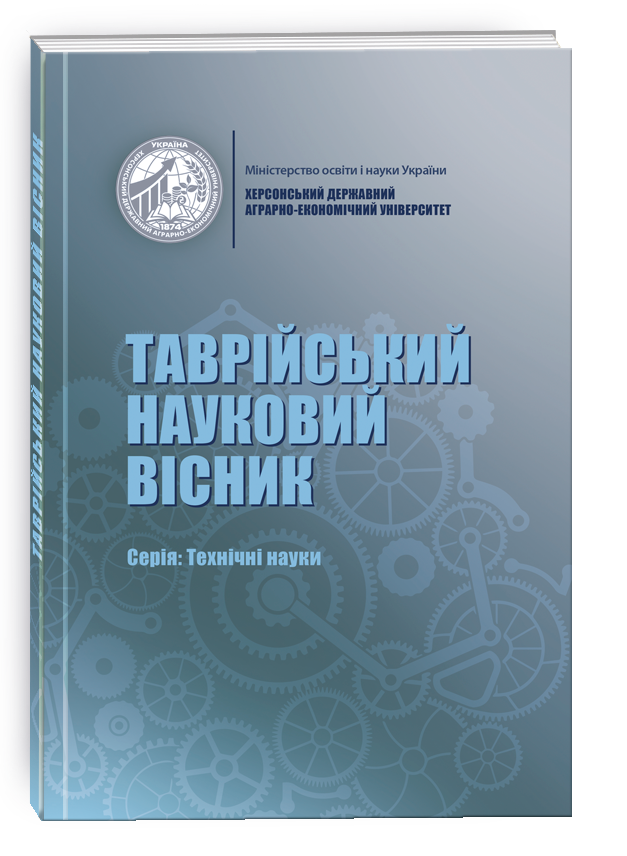SIMULATION OF THE RECIPE COMPOSITION OF HEALTHY FOOD PRODUCTS BASED ON FUNCTIONAL COMPOSITIONS
DOI:
https://doi.org/10.32851/tnv-tech.2022.5.4Keywords:
nutritional value, fructose, dessert dish, quinoa, easily digestible carbohydrates, apple mousseAbstract
The most important factor in the health of the population is nutrition and the intensity of the lifestyle. The development of functional food products with reduced carbohydrate content and the creation of ways to improve the structure of nutrition in general will influence the further development of food products technologies with increased nutritional and reduced energy value. The main problem of nutrition in our country is excessive consumption of easily digestible carbohydrates and providing the population with essential nutrients that meet the physiological needs of the body. The article examines the relevance and development of technologies for functional dessert dishes – apple mousse with fructose and quinoa flour. Organoleptic, technological and physicochemical studies were conducted, which proved the feasibility of using fructose and quinoa flour. In the process of technological development, taking into account the organoleptic evaluation, a prototype was selected and the technology of apple mousse with fructose and quinoa flour was developed. Technological studies were carried out on the replacement of semolina with quinoa flour. It was added in amounts from 10 to 100% to the mass of semolina. It was established that the optimal dosage of quinoa flour is 45%. An organoleptic evaluation of apple mousse with complete extraction of sugar and semolina using quinoa, gelatin and fructose was carried out on a 5-point scale, where such quality indicators as appearance, color, smell, taste, consistency were determined. Based on the results of the research, the technology of applesauce with fructose and quinoa with an improved content of essential nutrients was developed. Based on the obtained data, it can be concluded that the developed apple mousse with fructose and quinoa enriches the human diet with deficient nutrients and reduces the amount of easily digestible carbohydrates. The developed products can be recommended in diets to prevent diabetes, to improve digestion and strengthen immunity. The social effectiveness of the developed technology of apple mousse with fructose and quinoa consists in expanding the assortment of dessert dishes with a reduced amount of easily digestible carbohydrates. The developed dessert products can be recommended for food in the daily diets of people working in heavy industry, living in ecologically polluted areas and all strata of the population, to meet consumer demand for functional food products, as well as for people with diabetes and will contribute to the improvement the quality of nutrition and improving the health of the population of Ukraine.
References
Мазаракі А.А. Технологія харчових продуктів функціонального призначення. Київ: КНТЕУ. 2012. 1116 c.
Львович И.Я. Перспективные тренды развития науки: техника и технологии. Одеса: КУПРИЕНКО СВ. 2016. 197 c.
Корзун В. Н., Гаркуша С. Л. Заходи профілактики та лікування метаболічного синдрому у населення. Довкілля та здоров’я. 2016. №. 1. С. 9–13
Земліна Ю.В. Технологія борошняних страв на основі нетрадиційної сировини. Науковий журнал «Вчені записки» ТНУ ім. В.І. Вернадського. Серія «Технічні науки». Том 30 (69). 2019. № 4. С. 77-82.
Криворучко М.Ю. Структурно-механічні властивості прісного тіста з борошна пророщеного зерна пшениці. Міжнар. наук.-практ. журн. «Товари і ринки». 2012. № 1. С. 82–88.
Химический состав российских пищевых продуктов: Справочник / Под. ред. член-корр. МАИ, И.М. Скурихина и академика РАМН, проф. В.А. Тутельяна. М. : ДеЛи принт, 2002 . 236 с.
Сборник рецептур блюд и кулинарных изделий для предприятий общественного питания. Издательство «Экономика», Москва, 1982. 495 c.
Михайлик В.С. Технологія та якість печива зі шротами олійних культур. Харчова наука і технологія : науково-виробничий журнал. 2016. № 1. С. 72–77.
Кравченко М.Ф., Криворучко М.Ю. Структурно-механічні властивості прісного тіста з борошна пророщеного зерна пшениці. Товари і ринки: міжнародний науково-практичний журнал. 2012. № 1. С. 82–88.
Антоненко А.В. Борошно з пророщеного зерна вівса як основа для борошняних кондитерських виробів. Наукові праці Одеської національної академії харчових технологій. 2014. № 46 (1). С. 149–153.
Журавська А.А. Новітні технології кондитерських виробів підвищеної харчової цінності. Научные труды SWorld. 2013. № 1. С. 73–77.
Кравченко М.Ф. Наукове обгрунтування і розроблення фруктових систем як основи для солодких соусів. Міжнар. наук.-практ. журн. «Товари і ринки». 2009. № 2. С. 76–82.
Черевко О.І. Інноваційні технології харчової продукції функціонального призначення. Харків : ХДУХТ. 2017. 591 c.
Yatsenko V.M. Financial-economic and innovative support of entrepreneurship development in the spheres of economy, tourism and hotel-restaurant business. Agenda Publishing House, Coventry, United Kingdom. 2017. 619 c.
Русавська В.А. Теоретико-практичні підходи до ефективного функціонування ринку готельно-ресторанних послуг: стан, проблеми, тенденції. Київ : Видавництво Ліра. 2018. 420 c.
Преображенский А.П. Уровень развития техники и технологии в ХХI веке. Одеса : КУПРИЕНКО С.В. 2019. 227 c.
Гамаюнова В.В. Инновационные технологии в жизни современного человека. Одесса : КУПРИЕНКО СВ. 2020. 209 c.
Brovenko T. Food design as the actual direction of the interdisciplinary researches. Вісник Національної академії керівних кадрів культури і мистецтв : наук. журнал. 2018. № 2. С. 91-94.
Мазаракі А.А. Збірник рецептур кулінарної продукції і напоїв функціонального призначення. Київ : Київ. нац. торг.-екон. ун-т, 2013. 772 с.






